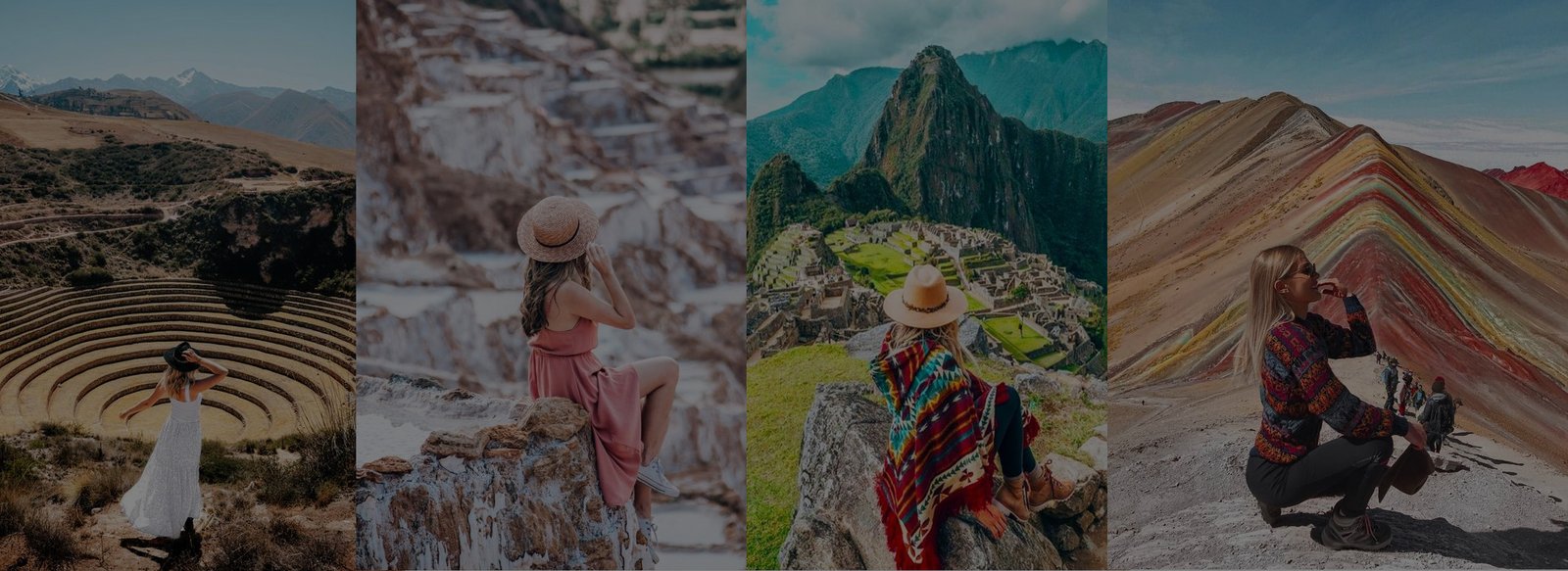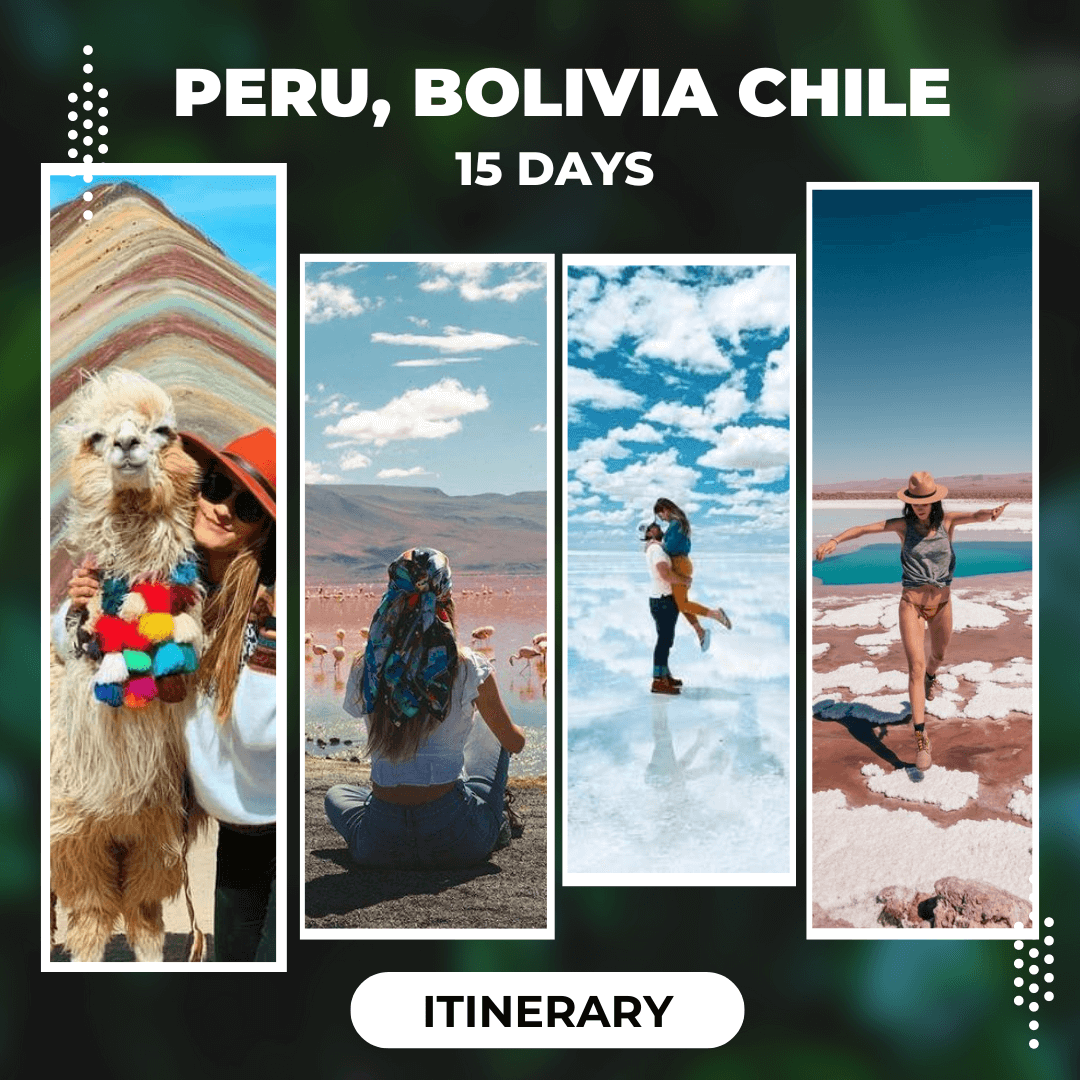
How Long Does It Take to Complete the Inca Trail? Guide to the Duration of the Inca Trail
Embarking on the majestic route of the Inca Trail is to embark on a journey through time and nature. This adventure, culminating in the enigmatic city of Machu Picchu, is not only a physical challenge but also an opportunity to connect with the history of the Inca Empire. The duration of the Inca Trail varies depending on the chosen route and the pace of each hiker, but generally, it is completed in four to five days. This trek offers the possibility to explore impressive landscapes and archaeological ruins, making it an unforgettable and enriching experience.
How Long Does It Take to Complete the Inca Trail?

The duration of the Inca Trail can vary considerably depending on several factors, including the specific route you choose and your physical condition. Generally, most travelers opt for the classic route, which takes approximately four days and three nights. However, there are shorter and longer alternatives that can accommodate different levels of experience and time availability.
Available Routes and Their Durations
Classic Route (4 days and 3 nights)
This is the most popular option for the Inca Trail 4 Days journey. It starts at kilometer 82 of the Railway to Machu Picchu and covers a total of approximately 43 kilometers. Hikers pass through ancient settlements, diverse landscapes, and various climatic zones, culminating in the arrival at Intipunku (Sun Gate), where there is a breathtaking panoramic view of Machu Picchu at sunrise on the last day.
Short Inca Trail (2 days and 1 night)
Ideal for those with limited time, the Inca Trail 2 Days starts at kilometer 104 and covers about 16 kilometers to Machu Picchu. Although shorter, this route still offers the opportunity to explore important archaeological sites, including Wiñay Wayna, before joining the final stretch of the classic trail towards Machu Picchu.
Long Inca Trail (5 days and 4 nights)
It adds an extra day to the beginning of the classic route to allow for a more detailed exploration of the archaeological sites and a more gradual acclimatization to the altitude, which can be crucial for the enjoyment and success of the trek.
Regardless of the chosen duration of the Inca Trail, all hikers must be prepared to walk several hours a day, often at high altitudes and through uneven terrain. Additionally, it is essential to consider the additional time needed for acclimatization to the altitude, especially in Cusco, before starting the trek to minimize the risk of altitude sickness.
What Factors Affect the Duration of the Inca Trail?

When planning such an iconic adventure as the Inca Trail, it is essential to understand that the duration of the Inca Trail can vary widely from person to person. Factors such as physical condition, weather, and the type of tour chosen play a crucial role in how long it will take to complete this historic route.
Physical Condition
The physical condition of the hiker is one of the most significant determinants of the duration of the Inca Trail. This trail, which stretches for approximately 39 kilometers from kilometer 82 to Machu Picchu, traverses mountainous terrain with altitudes reaching up to 4,200 meters above sea level at the Warmiwañusca pass, also known as ‘Dead Woman’s Pass.’ Hikers who regularly engage in physical activities or those who have acclimatized to the altitude can complete the trail in about 4 days, while those with less physical preparation or without acclimatization may need additional time to adjust to the environment and physical demands.
Weather
Weather is another critical factor that impacts the duration of the Inca Trail. The trail is open year-round, except in February when it closes for maintenance, but weather conditions vary significantly. During the dry season (May to October), the trails are generally more passable, and the weather more predictable, which can help maintain a good pace. In contrast, during the rainy season (November to April), the trails can be slippery, and thick fog can reduce visibility, often requiring slower progress to ensure safety.
Type of Tour Chosen
Finally, the type of tour chosen will also affect the duration of the Inca Trail. There are various options ranging from the classic 4-day tours, which are the most popular, to shorter or longer variants that include alternative or additional routes such as Huayna Picchu Mountain or the Sun Gate. Guided tours usually include set times for exploration, rest, and educational activities that can extend the duration of the experience, while independent travelers might choose to progress at a faster pace.
Is the Inca Trail Faster Than Traditional Routes?

When planning such an iconic adventure as the Inca Trail to Machu Picchu, one of the first questions that arises is how long it will take to complete this journey. In this context, comparing the duration of the Inca Trail with other traditional routes that also lead to the ancient Inca citadel is essential for properly planning our trip.
Duration Comparison
The classic Inca Trail is a route that has historically fascinated both tourists and historians for its rich connection to the Inca past. This trek stretches approximately 43 kilometers and is usually completed in 4 days and 3 nights. During this journey, hikers pass through ancient archaeological sites, varied landscapes, and microclimates ranging from Andean mountains to cloud forests.
On the other hand, there are alternative routes such as the Salkantay Trek, the Lares Trek, and the train from Cusco to Aguas Calientes. The Salkantay Trek usually takes about 5 days and 4 nights, covering a greater distance and with a higher degree of difficulty due to its high altitudes. The Lares Trek, famous for its cultural and natural landscapes, also extends for a similar period of 4 to 5 days. Meanwhile, the train to Machu Picchu from Cusco can take as little as a few hours but with a less immersive experience in terms of contact with nature and Inca culture.
Which Route is Faster?
If our goal is simply to reach Machu Picchu as quickly as possible, the train would be the most efficient option. However, if we seek a complete experience that includes hiking, exploration, and deep cultural immersion, the Inca Trail offers an ideal balance. Although not the fastest route in terms of total travel time, the duration of the Inca Trail is designed to maximize the cultural and natural experience without extreme physical exertion.
How Many Kilometers Are Covered Daily on the Inca Trail?

When planning such a significant adventure as the Inca Trail, it is essential to understand not only the total duration of the journey but also the daily effort it will involve. This understanding helps us prepare adequately both physically and mentally for the challenge ahead.
Daily Route Distribution
The classic Inca Trail spans approximately 43 kilometers and is typically completed in 4 days, although variations may extend this adventure to 5 days depending on the specific itinerary and the walking pace of the group. Here we break down the distance covered each day for the most common 4-day version:
First Day: Around 12 kilometers are covered, starting from Km 82 until reaching the Wayllabamba campsite. This segment is considered moderate; it allows walkers to acclimatize to the terrain and altitude, preparing them for the following challenges.
Second Day: This is the most demanding stretch, covering approximately 11 kilometers, but it includes the ascent to the Warmiwañusca pass, known as the ‘Dead Woman’s Mountain,’ at 4215 meters above sea level. The duration of the Inca Trail on this day is crucial as it reaches the highest point of the route.
Third Day: About 10 kilometers are covered. This day is less intense compared to the previous one; it passes through several archaeological sites including Runkurakay and Sayacmarca and is vital for connecting with Inca history and culture while advancing towards Phuyupatamarca.
Fourth Day: The last 10 kilometers lead hikers from Winay Wayna to Machu Picchu. This segment begins very early in the morning to reach the Machu Picchu citadel at sunrise, culminating in the mystical and spiritual experience of the trek.
Why is this Information Important?
Understanding the distribution of daily distance helps us better prepare for the journey. It allows us to manage our expectations and our energy, ensuring that we can complete each segment without extreme exhaustion. Additionally, knowing these details contributes to more efficient planning of breaks and meals, and helps guides better explain the history and significance of the places visited along the route.
What Impact Does Altitude Have on the Duration of the Inca Trail?

Exploring the Inca Trail is a transformative experience that challenges both the body and the spirit, mainly due to the high altitudes reached during the journey. Understanding how altitude affects the duration of the Inca Trail is crucial for proper planning and for adjusting our expectations before undertaking this historic trek.
Effects of Altitude on the Body
The Inca Trail reaches its highest point at the Warmiwañusca pass, commonly known as the Dead Woman’s Pass, at an impressive 4,215 meters above sea level. At these altitudes, the air becomes thinner, the amount of available oxygen decreases significantly, which can cause symptoms of altitude sickness, such as headaches, nausea, extreme fatigue, and difficulty breathing.
Altitude Adaptation
Acclimatization is key to handling the effects of altitude and directly affects the duration of the Inca Trail. Itineraries commonly include days designed specifically to allow the body to adjust to incremental altitudes. This usually means that the duration of the Inca Trail may be extended if walkers need more time to acclimatize and overcome the physical challenges caused by altitude.
Planning and Progress on the Trail
Daily Walk Distribution
The duration of the Inca Trail is impacted by how the body reacts to altitude. The second day, as mentioned earlier, is the most challenging not only due to the distance but also because of the elevation gain. Guides often plan this day to be slower and allow numerous stops for rest, inevitably extending the duration of the trek.
Pace Yourself
The pace at which walkers can progress decreases significantly as altitude increases. While at lower levels, a group could cover up to 12 kilometers in about 5 hours, at higher altitudes, the same group could take 7 hours or more to complete a similar distance. This adjustment in pace is crucial to avoid exhaustion and health problems and is an essential consideration when estimating the duration of the Inca Trail.
How to Prepare for the Climatic Variations of the Inca Trail?

The Inca Trail is not only a test of physical endurance but also of preparation for changing weather conditions. The route traverses various climatic zones, from Andean mountains to tropical forests, which can present a significant challenge if not adequately prepared. Here we explain how to equip yourself properly to handle these variations and ensure a memorable and safe experience.
Understanding the Climate on the Inca Trail
Daily Variability
The temperature on the Inca Trail can vary greatly. During the day, temperatures can reach up to 20°C, especially in the summer months (December to March), while at night, especially at the highest elevation, temperatures can drop below 0°C. Additionally, rain is a common factor during the rainy season (November to March), but it can surprise at any time of the year.
Essential Equipment
Layered Clothing
Preparing for the duration of the Inca Trail involves dressing in layers. It is recommended to wear a thermal base layer, an insulation layer (such as a fleece or lightweight sweater), and an outer layer that is waterproof and windproof. This combination allows for easy adaptation to temperature variations and staying dry.
Rain Protection
A rain poncho is indispensable, as rainfall can be intense and frequent. Make sure your poncho is large enough to cover both you and your backpack. Additionally, waterproof pants can be useful for maximum protection.
Appropriate Footwear
Footwear should be sturdy, waterproof, and have good grip. Hiking boots are ideal as they provide ankle support and are designed for rugged terrain like that found on the Inca Trail. Don’t forget to bring several pairs of wool or synthetic socks that can keep your feet dry and warm.
Strategies for Handling the Weather
Early Start
During the duration of the Inca Trail, starting the hike early in the morning is an effective strategy. This not only allows you to take advantage of the hours with less precipitation but also enjoy clearer views before clouds settle in later in the day.
Backpack Cover
A cover for your backpack is essential to protect your belongings from rain. Make sure it is made of waterproof material and fits snugly around your backpack to prevent water from seeping in.
Hydration and Nutrition
Staying hydrated is crucial, especially at high altitudes where dry weather can dehydrate you quickly. Bring enough water with you and consider using water purification tablets if necessary. Also, pack energy-rich snacks such as nuts, granola bars, and chocolate, which can be easily consumed on the trail, helping to maintain your energy levels.
Ready to embark on the adventure of a lifetime? At Machupicchu Travel Tour, we are experts in designing tailor-made tour packages that will transform the way you travel. Our local knowledge and attention to detail guarantee that your Sacred Valley trekking experience will be unforgettable. We are not only your best choice, we are your ultimate travel partner.
Don’t wait any longer! Follow us on Instagram to see our clients’ exciting adventures and join our community on Facebook for the latest news and special offers. Live the adventure, live Leading Travel.
With Machupicchu Travel Tour, every step you take to new heights is filled with the promise of wonder, learning and, of course, fun. Let us make your next great trip a reality!

